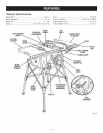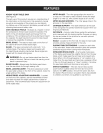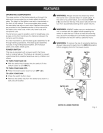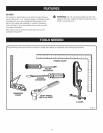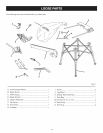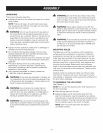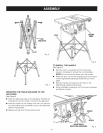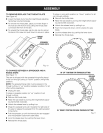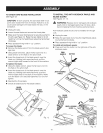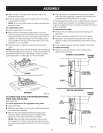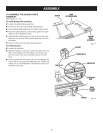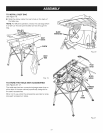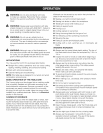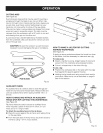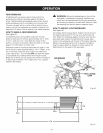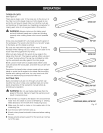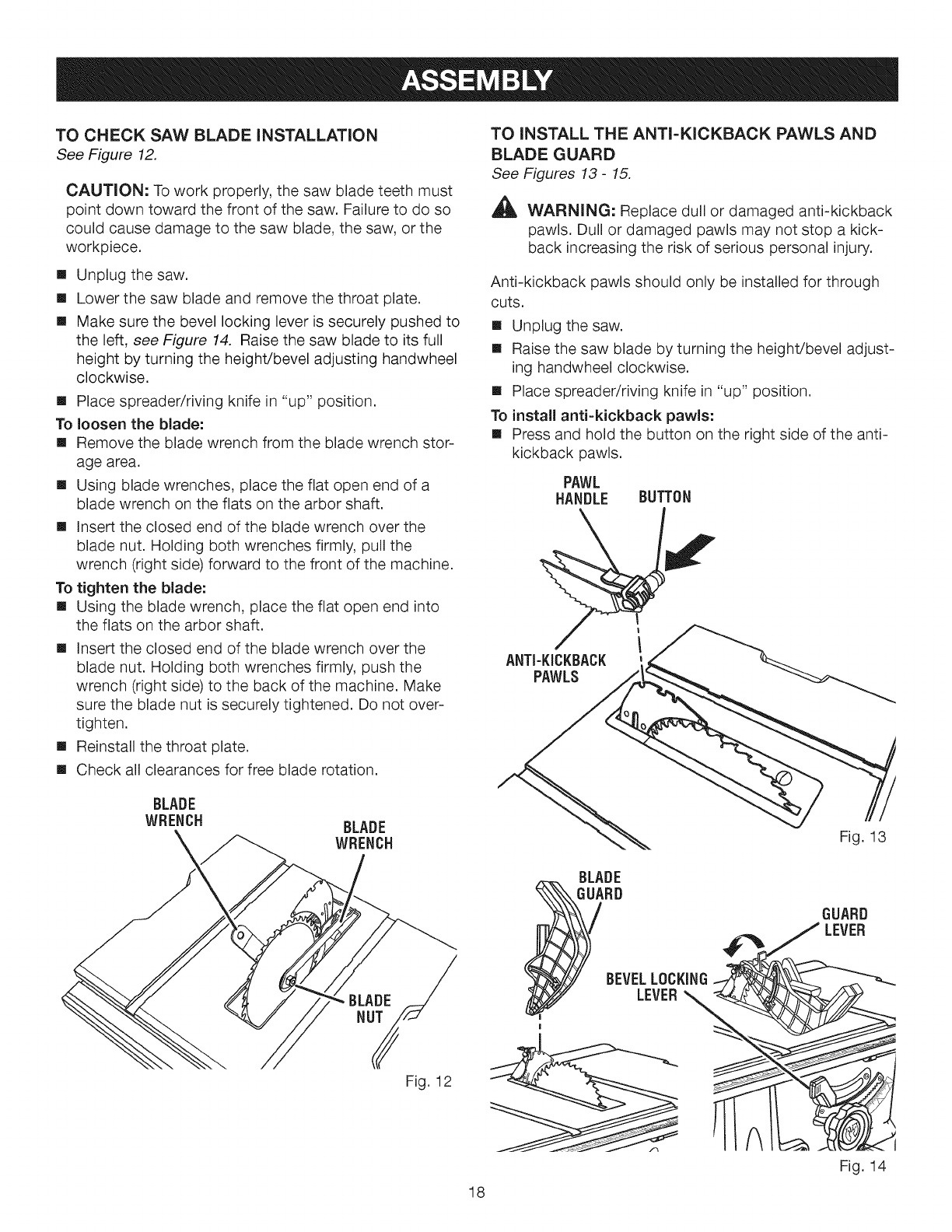
TO CHECK SAW BLADE iNSTALLATiON
See Figure 12.
[]
[]
[]
CAUTION: To work properly, the saw blade teeth must
point down toward the front of the saw. Failure to do so
could cause damage to the saw blade, the saw, or the
workpiece.
Unplug the saw.
Lower the saw blade and remove the throat plate.
Make sure the bevel locking lever is securely pushed to
the left, see Figure 14. Raise the saw blade to its full
height by turning the height/bevel adjusting handwheel
clockwise.
[] Place spreader/riving knife in "up" position.
To loosen the blade:
[] Remove the blade wrench from the blade wrench stor-
age area.
[] Using blade wrenches, place the flat open end of a
blade wrench on the flats on the arbor shaft.
[] Insert the closed end of the blade wrench over the
blade nut. Holding both wrenches firmly, pull the
wrench (right side) forward to the front of the machine.
To tighten the blade:
[] Using the blade wrench, place the fiat open end into
the flats on the arbor shaft.
[] Insert the closed end of the blade wrench over the
blade nut. Holding both wrenches firmly, push the
wrench (right side) to the back of the machine. Make
sure the blade nut is securely tightened. Do not over-
tighten.
[] Reinstall the throat plate.
[] Check all clearances for free blade rotation.
TO iNSTALL THE ANTI-KICKBACK PAWLS AND
BLADE GUARD
See Figures 13- 15.
_IL WARNING: Replace dull or damaged anti-kickback
pawls. Dull or damaged pawls may not stop a kick-
back increasing the risk of serious personal injury.
Anti-kickback pawls should only be installed for through
CutS.
[] Unplug the saw.
[] Raise the saw blade by turning the height/bevel adjust-
ing handwheel clockwise.
[] Place spreader/riving knife in "up" position.
To install anti-kickback pawls:
[] Press and hold the button on the right side of the anti-
kickback pawls.
PAWL
HANDLE BUTTON
ANTI-KICKBACK
PAWLS
BLADE
WRENCH
BLADE
WRENCH
Fig. 13
Fig. 12
|
BLADE
LEVER
GUARD
LEVER
18
Fig. 14



